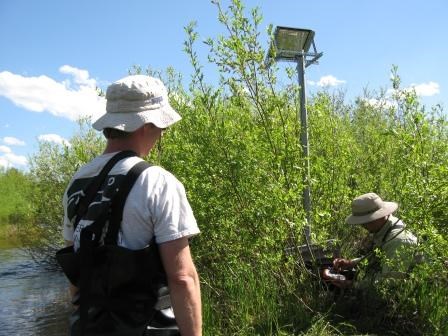
NPS photo When the Lewis and Clark expedition traveled through the Bitterroot Mountains and arrived in Nez Perce Country in 1805, Lewis wrote: "The country along the rocky mountains…is level extremely fertile and in many parts covered with a tall and open growth of the longleafed pine, near the watercourses the hills are steep and lofty tho' are covered with a good soil not remarkably stony and possess more timber than the level country. the bottom lands on the watercourses are reather narrow and confined tho' fertile and seldom inundated…to it's present inhabitants nature seems to have dealt with a liberal hand, for she has distributed a great variety of esculent plants over the face of the country which furnish them a plentifull store of provision…" Since Lewis and Clark's time, most of the habitat for plants important to the Nez Perce culture has been drastically altered through agricultural and industrial development. This makes it especially important to preserve remaining fragments of habitat and to monitor current conditions in Big Hole National Battlefield. 
NPS photo Within the park, management issues include concerns over the spread of nonnative and invasive weeds—e.g., spotted knapweed (Centaurea stoebe) and others—and the preservation of wildlife habitat. The presence of any federally listed threatened or endangered species require managers to consider potential actions to avoid impacts on special status species and/or wetlands that support such species. Climate change is also an increasingly pressing issue throughout the National Park Service and the nation. |
Last updated: December 16, 2017
